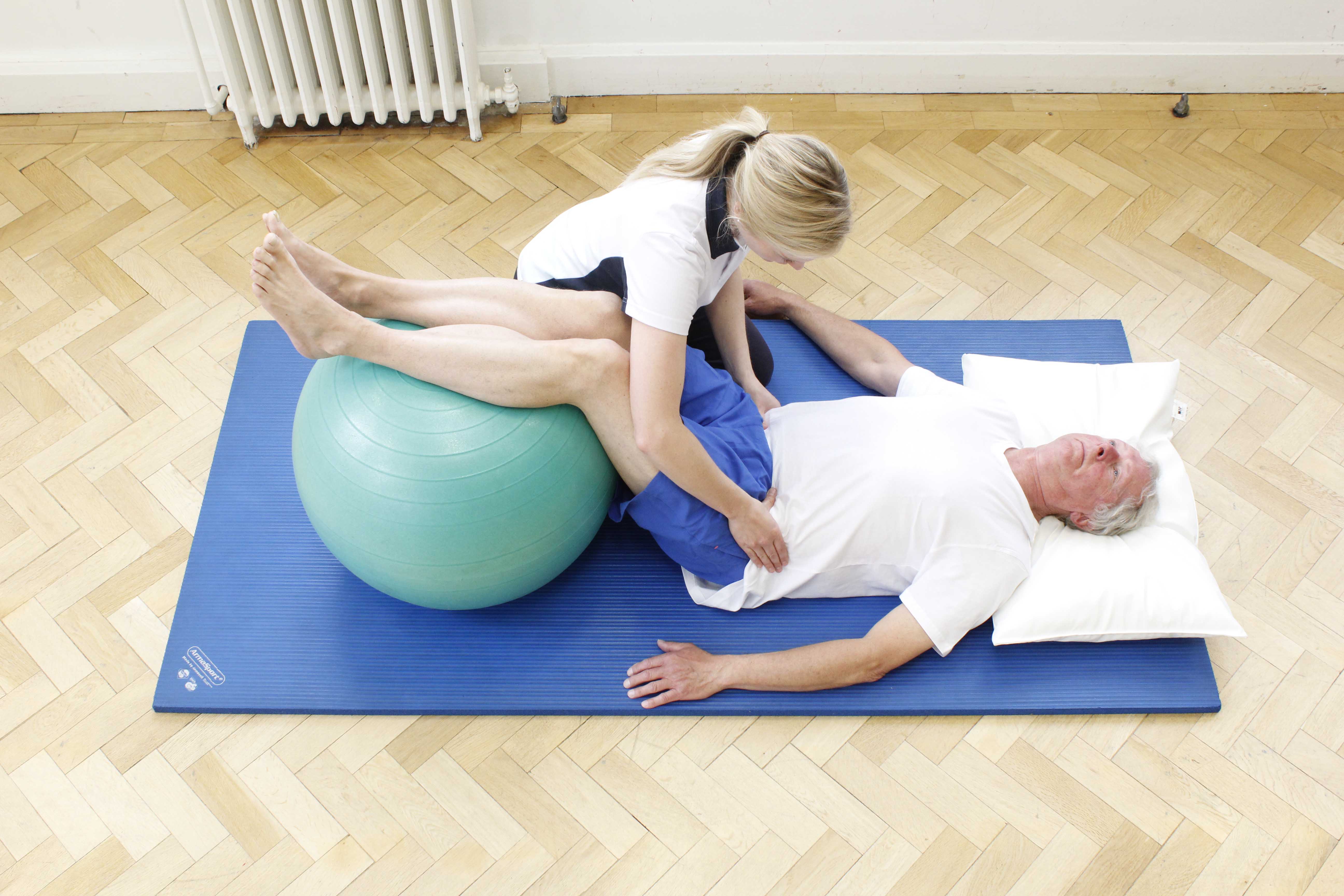Types of cancer
Cancer can be malignant or benign. A malignant tumour can spread and invade other organs via the lymph system or blood stream. Benign tumours lack the ability to spread in the same way.
Tumours are further categorised according to where they originate. The most common cancers developing in the breast, prostate, pancreas or lung are called carcinomas. Sarcoma is cancer growing in the bone or cartilage. Cancer that arises in the blood cells is called lymphoma or leukaemia.
 Above: General core rehabilitation exercises following prolonged illness
Above: General core rehabilitation exercises following prolonged illnessCauses of cancer
Cancer is caused by a combination of genetic and environmental factors. Environmental influences include smoking, lack of exercise, poor diet, infection, obesity and exposure to radiation.
Symptoms of cancer
Some symptoms of cancer may include pain, lumps or swelling, bleeding, unexplained weight loss, fatigue and excessive sweating. However, many of these symptoms occur in individuals who do not have cancer, therefore they do not confirm the diagnosis.
Diagnosis of cancer
Cancer is diagnosed based on the medical signs and symptoms, blood tests, computed tomography (CT) scan and a microscopic examination of a biopsy sample. A biopsy is a small sample of tissue which is examined under a microscope. This can help the medical staff to decide the nature of the cancer and the best possible treatment option for the individual.
Treatment of cancer
Treatment of cancer involves a specialist multi-disciplinary team. An oncologist is a medical professional who specialises in the diagnosis and treatment of cancer. There are different specialist areas of oncology according to the location and nature of the cancer. Your oncologist will discuss with you the various treatment options including radiotherapy, chemotherapy, hormone manipulation and possibly surgery to remove the tumour. It is important to consider the risks, implications and benefits of having or not having treatment for cancer, it is different for every individual.
Physiotherapy for cancer
Whether an individual decides to accept or decline treatment for cancer, physiotherapy can help with a range of symptoms and problems related to the nature and location of the tumour. An experienced clinician will carry out a detailed assessment of the individual’s symptoms, problems and discuss realistic, specific goals that are achievable within a desired timeframe. A treatment plan will be formulated that is specific to the needs of the individual. However, a general treatment plan for an individual with cancer may include:
- Mobility or transfer practice
- Specific muscle strengthening exercises
- Scar tissue massage and stretches
- Muscle mobilisations
- Postural re-education
- Joint range of movement stretches
- Breathing exercises
- Hydrotherapy
- Pain management
- Fatigue management
- Relaxation
All individuals with cancer substantially benefit from physiotherapy assessment and treatment. The benefits range widely and improve both physical and emotional symptoms.
- Increased mobility and balance
- Increased range of movement
- Increased muscle strength
- Increased confidence and motivation
- Improved posture and body alignment
- Decreased pain
- Decreased fatigue
- Decreased risk of secondary complications
Why Physio.co.uk after cancer
At Physio.co.uk we understand that you want to have the highest possible quality of life. Our specialist physiotherapists can help to minimise your symptoms, reduce your pain and improve your ability to return to a normal fulfilling life.
- Treatment at any stage of your condition
- Treatment at home or in the clinic
- No waiting lists
- Flexible appointment times
- Provision of home exercise program
- Provision of aids and equipment
- Access to hydrotherapy

 0330 088 7800
0330 088 7800

































